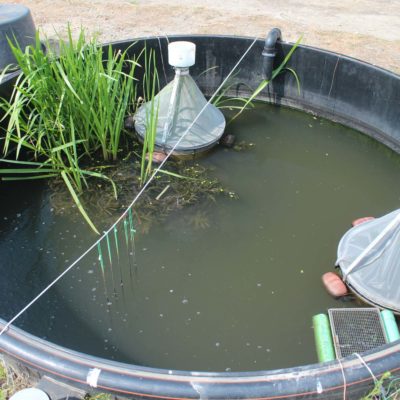Aquatic mesocosm studies are used as higher-tier test systems in the ecological risk assessment of plant protection products. For more than 20 years, we have regularly conducted field mesocosm studies for insecticides, fungicides and herbicides under GLP in cooperation with external partners (e.g. Fraunhofer IME, Schmallenberg, Germany). The external partners are responsible for the analysis of the test substance as well as GLP technical issues such as quality assurance. Over the past 20 years, we have continuously optimized our methods for sampling, determination and evaluation in line with changing regulatory requirements. To this end, we have continuously expanded the range of organism groups used. Each study is specifically tailored to the needs of the customer. Therefore, it is a matter of course for us to work together with the client to develop an optimal test design tailored to their requirements.





